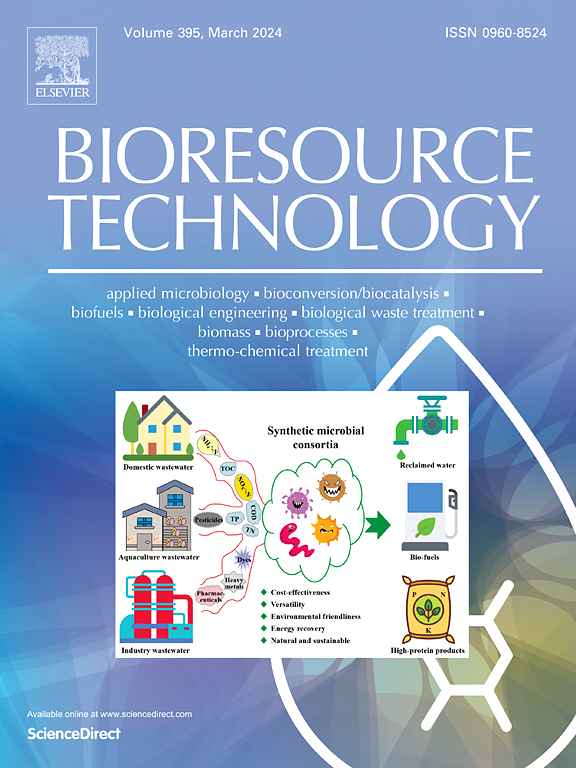Ultraviolet-shielding bioplastic films from Antarctic Klebsormidium sp. ASYA19: A sustainable approach to plastic alternatives
IF 9
1区 环境科学与生态学
Q1 AGRICULTURAL ENGINEERING
引用次数: 0
Abstract
This study presents an innovative UV-protective bioactive film derived from Antarctic Klebsormidium sp. ASYA19, cultivated under high light intensity and low temperature in an airlift photobioreactor. The microalgae exhibited peak UV-active biomolecule production during the late exponential growth phase, making this the optimal harvest point for bioplastic development. Bioplastics were successfully formulated using the crude microalgal biomass (CKB) alone and in various blends with polyvinyl alcohol (PVA) and glycerol as additives. Notably, a simple 5 % CKB suspension independently forms effective UV-shielding films demonstrating superior UV-blocking capacity, particularly at 330 nm. PVA incorporation enhanced tensile strength (up to 12.10 MPa) but reduced UV-blocking efficacy through dilution effects. Glycerol increased flexibility while maintaining reasonable strength. FTIR spectroscopy and thermal analysis confirmed the effective integration of the additive through hydrogen bonding. These findings highlight the potential of Antarctic microalgae as a sustainable source for functional biomaterials with promising applications in UV-protective packaging and coatings.

来自南极克雷伯sormidium sp. ASYA19的紫外线屏蔽生物塑料薄膜:塑料替代品的可持续途径
本研究以南极Klebsormidium sp. ASYA19为原料,在高光强和低温条件下在气升式光生物反应器中培养出一种新型的防紫外线生物活性膜。微藻在指数生长后期表现出uv活性生物分子的峰值,使其成为生物塑料发育的最佳收获点。以微藻粗生物量(CKB)单独和以聚乙烯醇(PVA)和甘油为添加剂的各种混合物为原料,成功地配制了生物塑料。值得注意的是,简单的5% CKB悬浮液独立形成有效的紫外线屏蔽膜,显示出卓越的紫外线屏蔽能力,特别是在330 nm。PVA的掺入提高了拉伸强度(高达12.10 MPa),但通过稀释效应降低了紫外线阻隔效果。甘油在保持合理强度的同时增加了柔韧性。红外光谱和热分析证实了添加剂通过氢键的有效整合。这些发现突出了南极微藻作为功能性生物材料的可持续来源的潜力,在防紫外线包装和涂层方面具有广阔的应用前景。
本文章由计算机程序翻译,如有差异,请以英文原文为准。
求助全文
约1分钟内获得全文
求助全文
来源期刊

Bioresource Technology
工程技术-能源与燃料
CiteScore
20.80
自引率
19.30%
发文量
2013
审稿时长
12 days
期刊介绍:
Bioresource Technology publishes original articles, review articles, case studies, and short communications covering the fundamentals, applications, and management of bioresource technology. The journal seeks to advance and disseminate knowledge across various areas related to biomass, biological waste treatment, bioenergy, biotransformations, bioresource systems analysis, and associated conversion or production technologies.
Topics include:
• Biofuels: liquid and gaseous biofuels production, modeling and economics
• Bioprocesses and bioproducts: biocatalysis and fermentations
• Biomass and feedstocks utilization: bioconversion of agro-industrial residues
• Environmental protection: biological waste treatment
• Thermochemical conversion of biomass: combustion, pyrolysis, gasification, catalysis.
 求助内容:
求助内容: 应助结果提醒方式:
应助结果提醒方式:


